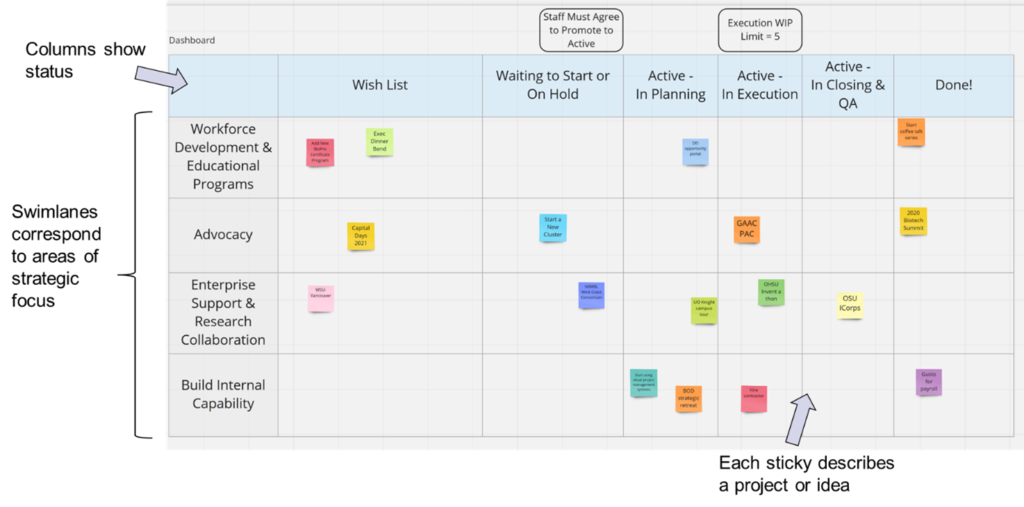The MBA class I teach worked on project portfolio management (PPM) in the final weeks of class. That inspired me to write this note on portfolio management for small workgroups.
PPM is a managerial method for investing in project work so that it aligns with strategic objectives and organizational capabilities. I arranged a panel of three executives for the final class session. Two of them run large, complex portfolios of project investments using sophisticated portfolio management techniques, using full-time support staff and special software.
One of the students asked the panelists whether small workgroups are left out in the cold when it comes to portfolio management. Despite the benefits of PPM, small groups can’t afford all that fancy stuff. The answer from the panelists was that the concepts still apply, but the techniques and level of detail must be scaled down.
Here’s an example. This is a screen shot of an online portfolio dashboard for a small trade association staffed by a handful of people. I developed it to help them visualize the small portfolio of projects they are doing or wish they could do. It works like a Kanban board, but each virtual sticky represents an idea or project in the portfolio instead of a task in a project. A good way to use the dashboard is at the weekly staff meeting, to frame a discussion of which ideas should be promoted to active projects, and what’s happening on projects that are already active.
A sticky always starts in the wish list column. This column is a way to capture a new idea without having to immediately evaluate it. If the staff agrees that the idea should be implemented, they move it either to “active – in planning” (if resources are available to start work on it now), or to “waiting” (if it is too early to start or resources aren’t available yet).
The dashboard has separate columns for active projects in planning, execution, and closeout. These help the staff remember that planning and closeout are essential bookends to execution. The number of active projects is limited by a so-called WIP limit so that the organization doesn’t try to take on too much at once. (WIP is an acronym for work in progress and comes from lean.) The done column provides a way to savor the victory of projects that have completed. The example shows only the name of a project on each sticky, but information about the project can be added as it moves from raw idea on the left to completed project on the right.
This simple dashboard is less sophisticated than the advanced portfolio management techniques used by the panelists, but for a small portfolio it is a great way to communicate, monitor status, and encourage good discussions about what projects can or should be undertaken. That’s a worthy result no matter the size of the portfolio.

